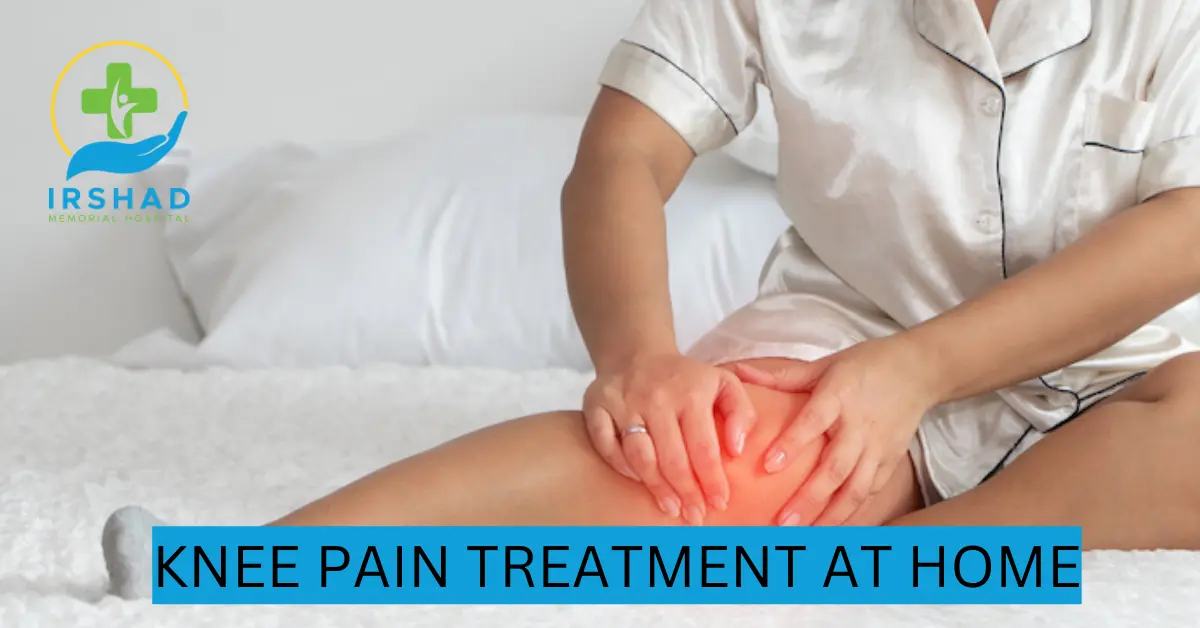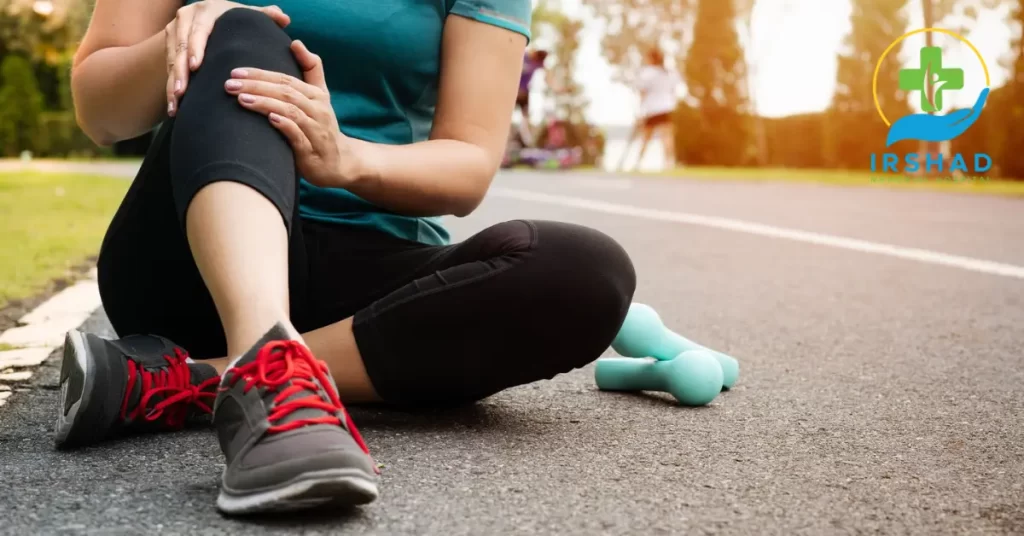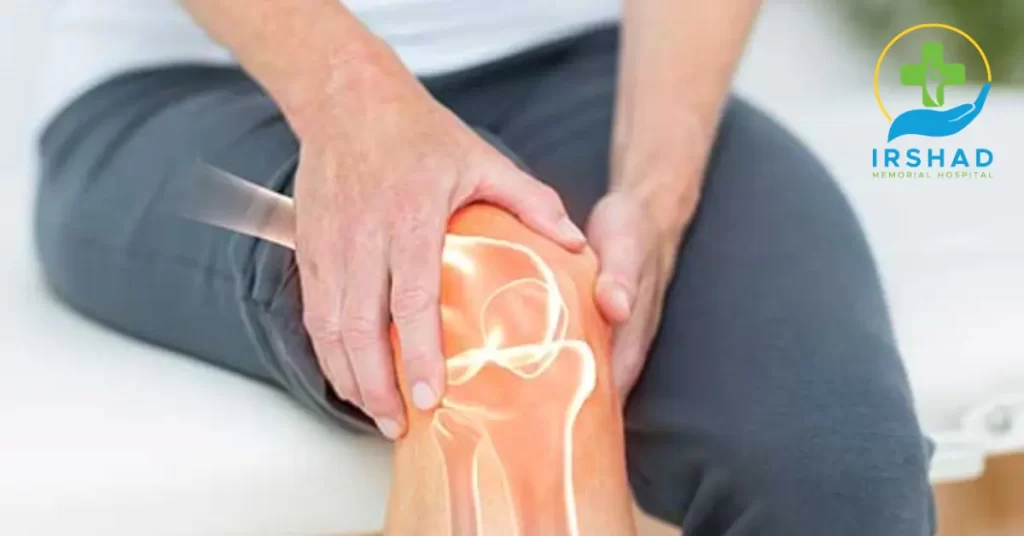
Dealing with knee pain can be a common challenge, but finding relief at home is often possible with simple strategies. Whether it’s a result of overuse, injury, or underlying conditions, home-based treatments can play a crucial role in managing discomfort. From rest and ice to gentle exercises and proper footwear choices, these approaches can contribute to alleviating knee pain and promoting overall joint health.
In this guide, we’ll explore easy and practical ways to address knee pain within the comfort of your home. Always consult with a healthcare professional for a proper diagnosis, but incorporating these at-home techniques may provide valuable support on your journey to more comfortable and pain-free knees.
What causes pain years after knee replacement?
Persistent pain years after knee replacement surgery can be attributed to various factors. One common cause is implant wear and tear over time, leading to inflammation and discomfort. In some cases, infection or loosening of the prosthetic components may occur, causing pain. Scar tissue formation around the knee joint can also contribute to ongoing discomfort.
Additionally, issues with the surrounding soft tissues, ligaments, or tendons may lead to pain even after successful surgery. Joint instability or improper alignment of the prosthetic components can be other contributing factors. It’s crucial to consult with a healthcare professional to identify the specific cause of the pain and determine an appropriate treatment plan, which may include physical therapy, medication, or, in some cases, revision surgery.
Can back problems/lower back pain cause knee pain?

Yes, lower back problems can contribute to knee pain. The lower back and knees are interconnected through the nervous system and musculoskeletal structure. Issues like herniated discs or lumbar spine problems can lead to nerve compression, causing radiating pain that may be felt in the knees. Additionally, poor posture or misalignment in the lower back can affect the mechanics of the entire lower body, potentially leading to stress on the knees and resulting in pain.
It’s essential to address and treat underlying back problems through exercises, stretching, and, if necessary, professional medical guidance. Proper posture, core strengthening, and overall back health maintenance can help alleviate knee pain associated with lower back issues. If the pain persists, consult a healthcare professional for a thorough evaluation.
Can hip problems cause knee pain?
Yes, hip problems can contribute to knee pain. The hip and knee joints are closely connected, and issues in the hip can affect the mechanics of the knee. Conditions such as osteoarthritis, bursitis, or labral tears in the hip can lead to pain that radiates down to the knee. Hip joint stiffness or improper alignment may alter the way weight is distributed, putting extra stress on the knee joint and causing discomfort.
It’s crucial to address hip problems through appropriate exercises, stretching, and, if necessary, medical intervention. Physical therapy to improve hip function can often alleviate knee pain associated with hip issues. If persistent or severe, consult a healthcare professional for a thorough evaluation and personalized treatment plan.
Can flat feet cause knee pain?
Yes, flat feet can contribute to knee pain. Flat feet, or fallen arches, can alter the alignment of the lower extremities, leading to increased stress on the knees. The lack of a natural arch in the foot can result in improper distribution of weight and impact forces during movement, affecting the knee joint. Over time, this misalignment can contribute to conditions such as patellofemoral pain syndrome or iliotibial band syndrome, causing discomfort in the knee area.
Supportive footwear or orthotic inserts can often help by providing arch support and improving foot alignment, subsequently reducing knee pain. If flat feet are contributing to persistent knee pain, consulting with a healthcare professional or a podiatrist for appropriate interventions and recommendations is advisable.
Does sciatica cause knee pain

Yes, sciatica can cause knee pain. Sciatica is a condition where the sciatic nerve, which runs from the lower back down the back of each leg, becomes irritated or compressed. The pain typically starts in the lower back or buttocks and can radiate down to the knee and even into the calf or foot. The sciatic nerve irritation can lead to a variety of symptoms, including sharp or shooting pain, tingling, and numbness.
As the pain travels along the nerve pathway, it may be felt in the knee. Managing sciatica often involves gentle stretching, anti-inflammatory medications, and addressing the underlying cause of nerve compression, such as a herniated disc. If experiencing persistent knee pain associated with sciatica, consulting with a healthcare professional for proper diagnosis and treatment is recommended.
What causes burning knee pain at night?
Burning knee pain at night can be caused by various factors. One common reason is nerve-related issues, such as sciatica or peripheral neuropathy, where nerves become compressed or damaged, leading to a burning sensation. Inflammatory conditions like arthritis or bursitis can also cause nighttime knee pain, as inflammation tends to increase during periods of inactivity.
Additionally, overuse or strain on the knee joint from activities during the day may result in nighttime discomfort. Poor circulation, especially in conditions like peripheral artery disease, can contribute to a burning sensation in the knees. It’s essential to identify the specific cause through a medical evaluation. If experiencing persistent nighttime knee pain, consult with a healthcare professional to determine the underlying issue and appropriate treatment for relief.
Can bunions cause knee pain?
Yes, bunions can contribute to knee pain. Bunions are bony protrusions that form at the base of the big toe, often causing the joint to deviate and the toes to angle toward the other toes. This altered foot structure can lead to changes in weight distribution and the overall mechanics of walking. As a result, the knees may be subjected to additional stress, potentially leading to knee pain.
The misalignment caused by bunions can impact the normal gait pattern and joint mechanics, affecting the entire lower extremity. Wearing supportive footwear, using orthotic inserts, and managing bunion symptoms through conservative measures may help alleviate associated knee pain. If persistent or severe, consulting with a healthcare professional for a comprehensive assessment and appropriate interventions is advisable.
What doctor do you see for knee pain?
For knee pain, you should initially consult with a primary care physician or a general practitioner. They can perform an initial assessment, review your medical history, and conduct basic tests to identify potential causes of the knee pain. If necessary, they may refer you to a specialist such as an orthopedic doctor, rheumatologist, or a sports medicine physician, depending on the nature and complexity of the issue.
Orthopedic doctors specialize in musculoskeletal conditions and can provide a more in-depth evaluation of joint problems. Rheumatologists focus on autoimmune and inflammatory conditions that may affect the joints. Sports medicine physicians are experts in injuries related to physical activity. Ultimately, the type of doctor you see may depend on the specific characteristics and underlying causes of your knee pain.
Do orthotics work for knee pain

Yes, orthotics can be effective for alleviating knee pain, especially when the pain is associated with issues related to foot alignment and mechanics. Orthotic inserts are custom-made or over-the-counter shoe inserts designed to provide additional support, correct imbalances, and improve the overall alignment of the feet. By optimizing foot positioning, orthotics can help distribute weight more evenly, reducing stress on the knees.
This can be particularly beneficial for conditions like flat feet, overpronation, or other foot abnormalities that contribute to knee discomfort. While orthotics may not be a one-size-fits-all solution, many individuals find relief from knee pain through the use of properly fitted orthotic inserts. It’s advisable to consult with a healthcare professional, such as a podiatrist or orthopedic specialist, to determine if orthotics are a suitable option for addressing your specific knee pain.
How to get a prescription for knee braces?
To get a prescription for knee braces, follow these simple steps:
- Visit a Healthcare Professional: Schedule an appointment with your primary care physician, orthopedic doctor, or sports medicine specialist.
- Describe Your Symptoms: Clearly explain your knee pain or condition, detailing when it started, its severity, and any activities that worsen the pain.
- Undergo Evaluation: The healthcare professional will likely conduct a physical examination of your knee and may order imaging tests if necessary.
- Discuss Treatment Options: If a knee brace is deemed beneficial for your condition, your healthcare provider may write a prescription for a specific type or recommend over-the-counter options.
- Follow Up: Attend any recommended follow-up appointments to monitor your progress and make any necessary adjustments to your treatment plan.
By seeking professional medical advice, you ensure that the knee brace prescribed is tailored to your specific needs and provides optimal support for your condition.
Can wearing flip flops/high heels/worn out shoes cause knee pain?
Yes, wearing inappropriate footwear like flip-flops, high heels, or worn-out shoes can contribute to knee pain. Flip-flops lack arch support and stability, altering the natural walking gait and potentially leading to knee stress. High heels can cause an imbalance, tilting the pelvis and increasing pressure on the knees, contributing to pain.
Worn-out shoes may lack proper cushioning and support, leading to poor shock absorption and increased impact on the knees during walking or running. Choosing footwear that provides adequate arch support, cushioning, and stability is crucial to maintain proper alignment and reduce the risk of knee discomfort. Opt for shoes that suit the activity, and replace worn-out footwear regularly to promote overall joint health and prevent knee pain.

